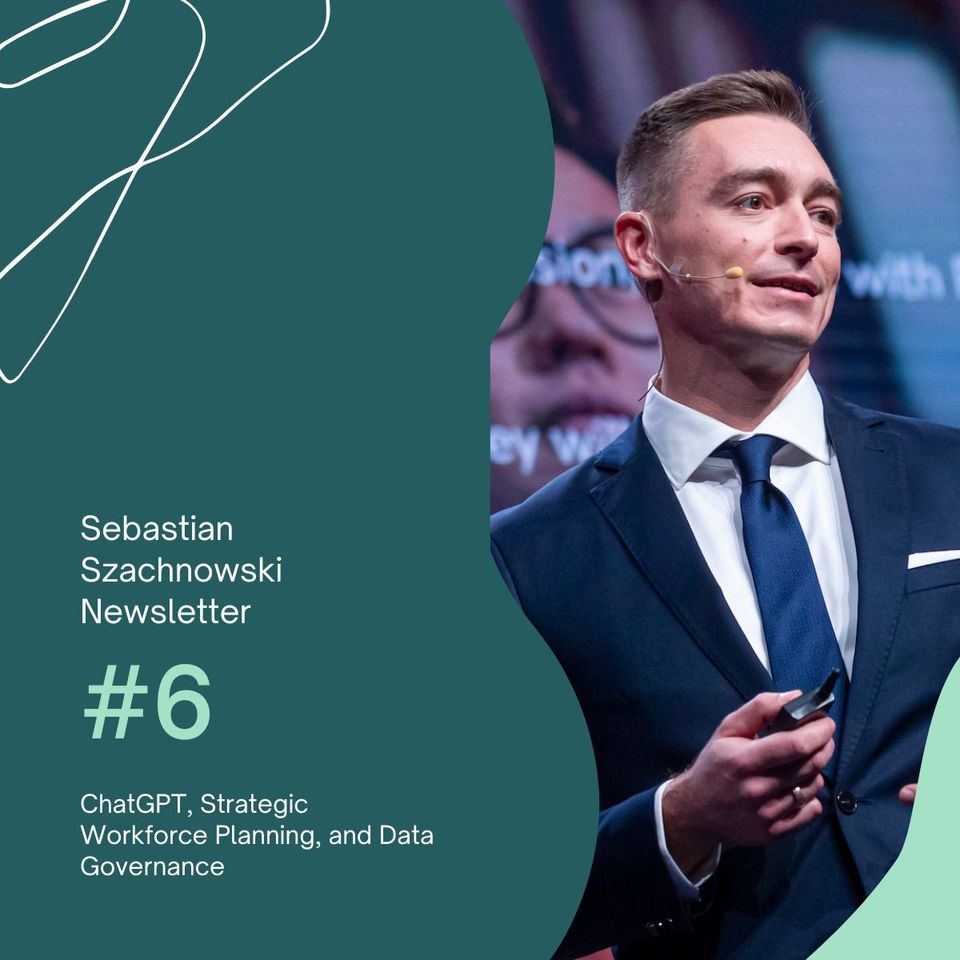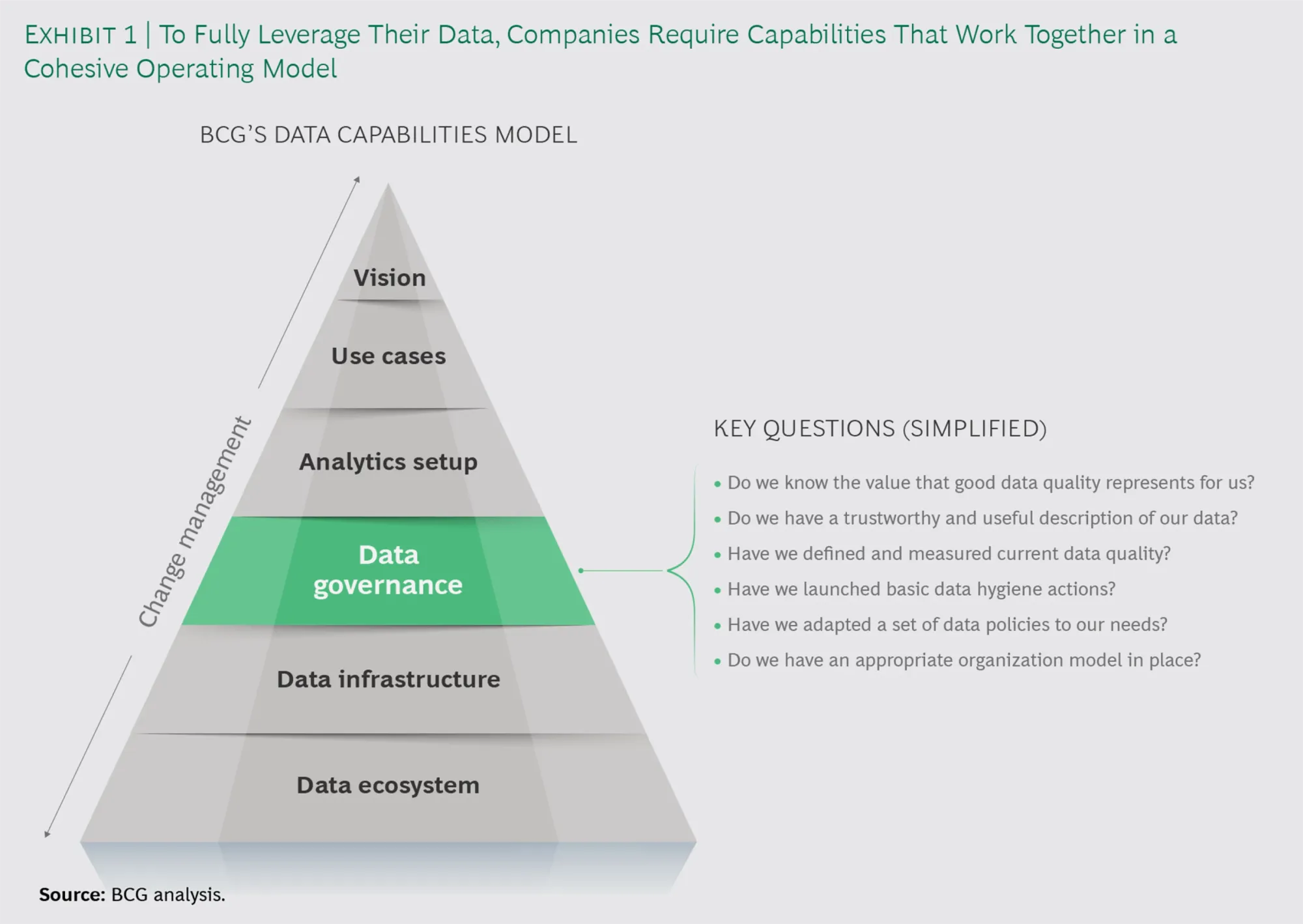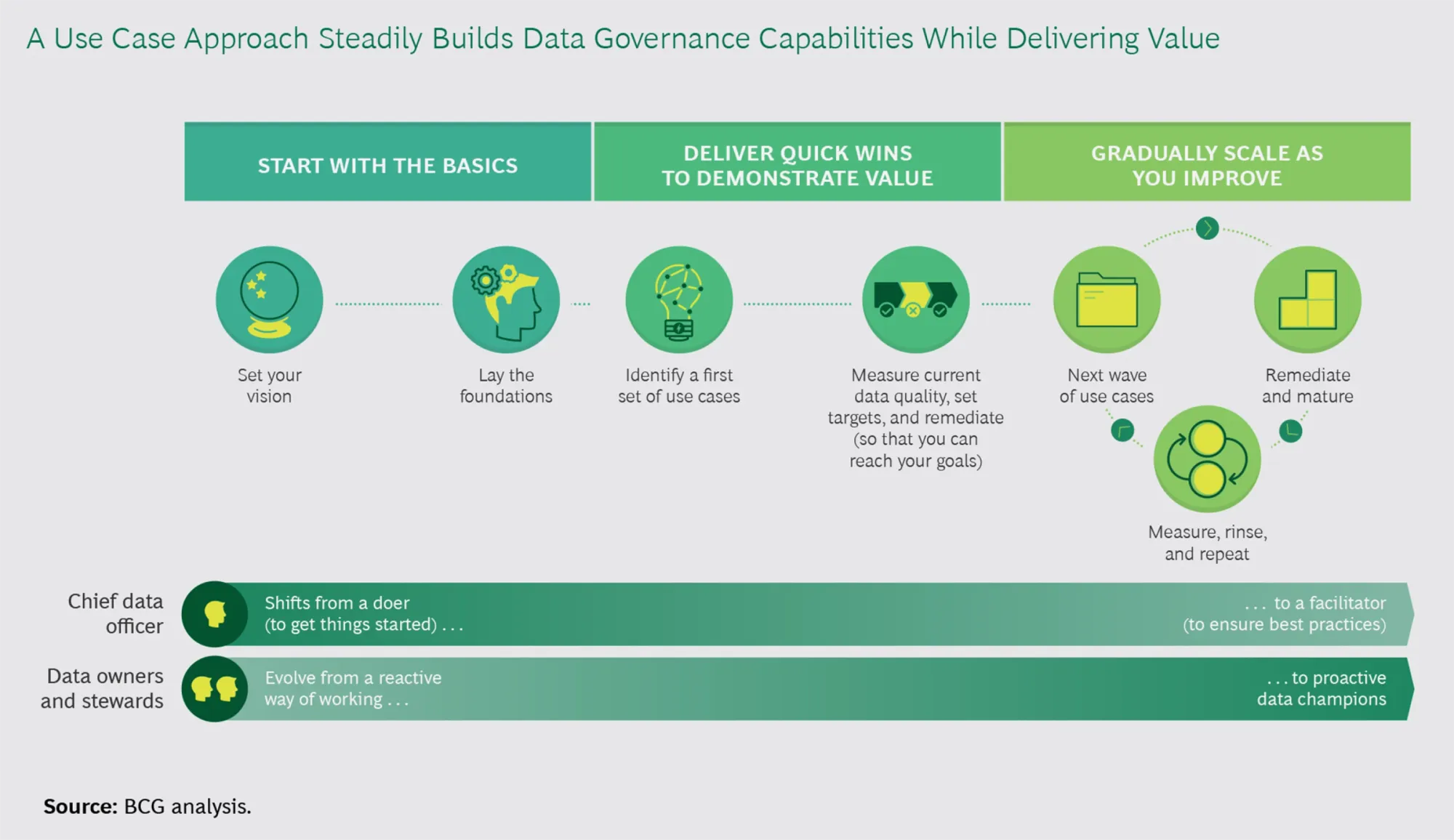ChatGPT, Strategic Workforce Planning, and Data Governance

Happy new year 2023!
I skipped one issue of the newsletter that was supposed to go out on 20th of December because I got flu. I don’t recommend flu. I recommend vaccination (I missed my flu vaccination this year and I clearly recognize this as a mistake).
At the end of November, OpenAI has released ChatGPT, a new generation of conversational AI. It’s available to test for free and I think it’s really impressive. Most likely, if you’re technology geek, you encountered conversational AI before. But your experience was so-so at best. Now, get ready to put your hands on something that is genuinely useful.
Since I was a kid I wanted my computers to do two things:
- Execute activities automatically
- Support decision making
Both were partially achieved by automation and analytics (hence, my big interest in these subjects). Although, solutions still weren’t perfect. Automation is mainly limited to procedural rule-based processes and classification machine learning algorithms that shows recommendations. Advanced analytics supports decision making but is not providing answers to verbal questions (yet) as it requires particular (advanced) skills to extract insights from the data and to read visualizations.
And here we have a revolutionary conversational AI that is knowledgeable enough to produce quality answers on the fly and can do the analyses for you and provide with synthesis of information as a response to ad hoc inquiry. Next-gen automation is here!
Table of contents:
- ChatGPT
- What Is Strategic Workforce Planning?
- Data Management
I hope you will enjoy this issue of my newsletter!
ChatGPT
Previous versions of GPT have been available for quite a while, but it’s released at the end of November ChatGPT-3 that is super useful for variety of tasks. It can create software, generate business ideas, write wedding toasts, or even edgy poetry (I tried). All of these was possible for other systems for quite a while, but this what is different this time is the quality. Startlingly high quality of AI generated output.

Put simply: This is a very big deal. The businesses that understand the significance of this change — and act on it first — will be at a considerable advantage. Especially as ChatGPT is just the first of many similar chatbots that will soon be available, and they are increasing in capacity exponentially every year.
Over the years of hype for AI, we have learned skepticism. We still don’t have fully autonomous cars. Neither our queries are receiving always good answers. Machine learning has good results and benefits, but it’s just advances statistics, not General AI some prophets were forecasting ten years ago.
But this time it might be different. The more you see what changed with ChatGPT, the more you’ll see it as a prospective tipping point.
Until now, AI was aimed at problems where failure is expensive. A car that occasionally gets into accidents is intolerable. However, creative and expressive tasks, like writing a marketing copy, is safe even if it fails, and opens whole new world of applications.
First of all, AI can produce paragraphs of solidly written English (or Polish, French, Dutch, Mandarin, etc.) with high degree of sophistication. But it can also create software code (!) on demand. It can significantly speed up many business tasks and activities. This is a massive change. Now, one programmer will be able to accomplish what not so long time ago was the work of many.
Secondly, it has great capacity to perform different kinds of writing and greatly increase the productivity of businesses in varied industries. It will allow them to produce more written material in less time.
By utilizing AI’s ability to quickly and accurately generate written content, businesses can save time and resources, allowing them to focus on other important tasks. This is particularly beneficial for industries such as marketing and advertising, consulting, and finance, where high-quality written materials are essential for communicating with clients and stakeholders.
Last but not least, the third major change is the possibility of human-machine hybrid work. Experts will be able to fill in the gaps of the AI’s capability. This sort of interaction will lead to an increase in performance.
Using specialized data, it’s possible to build each customer their own customized AI that predicts what they need, responds to them personally, and remembers all their interactions. This isn’t science fiction. It is entirely doable with the technology just released.
There are some hinders, though. AI is great at creating convincing-sounding nonsense. It’s not a replacement for Google as it, literally, doesn’t know what it doesn’t know. Still, this is just a complex algorithm generating meaningful sentences.
Also, it’s unsupervised nature means it could have biases and that unethical actions might be generated. This issues will become more accurate as these tools spread.
But why it is so disruptive? The writer will no longer need to write the articles alone, the programmer to code on their own, or the analyst to approach the data themselves. This is a new kind of collaboration that did not exist last month. One person can do the work of many. This is new era of automation.
No one really knows what that means yet. And this is just the first of many models. I’m sure other companies are working on similar, or maybe even more advanced tools.
I encourage you to immediately start experimenting with the tool (it’s for free, here) and start thinking about the implications: for your company, your industry, and for the world. Integrating AI into our work will be a revolution.
Source: https://hbr.org/2022/12/chatgpt-is-a-tipping-point-for-ai
What Is Strategic Workforce Planning?
Strategic workforce planning (SWP) is the process of identifying and planning for the future skills, knowledge, and labor needs of an organization. It involves analyzing the current workforce, identifying any gaps or shortages in terms of skills and capabilities, and developing strategies to address those gaps in the short and long term.
There are several ways that an organization can implement strategic workforce planning:
- Skills assessment: Conducting a skills assessment can help an organization identify the current capabilities of its workforce and identify any gaps or shortages in terms of skills and knowledge. This can be done through a variety of methods, such as employee surveys, focus groups, or interviews with key stakeholders.
- Succession planning: Succession planning involves identifying and developing individuals with the potential to step into leadership roles as they become available. This can involve creating development plans for high-potential employees, providing mentorship and coaching opportunities, or offering job rotation or other learning experiences.
- Workforce analytics: Leveraging workforce analytics can help an organization understand trends and patterns in its workforce data, such as employee retention, turnover, and skills gaps. This can help inform decision-making around workforce planning and development.
- Talent management: Talent management involves identifying and attracting top talent, as well as retaining and developing current employees. This can include implementing programs such as employee development, training, and performance management.
For example, an organization in the healthcare industry may use SWP to identify a need for additional nurses with specialized training in critical care. The organization may then implement a succession planning program to develop current employees with the potential to become critical care nurses, or implement a talent management program to attract and hire nurses with the necessary skills and experience. Alternatively, an organization in the retail industry may use workforce analytics to understand trends in employee turnover and implement talent management programs to improve retention and reduce the costs associated with hiring and training new employees.
There are several tangible benefits that companies can experience as a result of implementing strategic workforce planning:
- Improved productivity: By ensuring that the workforce has the necessary skills and resources to perform their job duties effectively, companies can increase productivity and efficiency. This can result in cost savings and increased profitability.
- Increased competitiveness: SWP can help companies identify key areas where they have a competitive advantage and focus on developing those skills within the organization. This can help the company stay ahead of competitors and win new business.
- Adaptability to changing market conditions: SWP can help companies anticipate and prepare for changes in the market, such as shifts in customer demand or new technologies. By identifying and addressing potential skills gaps, companies can quickly adapt to these changes and remain competitive.
- Talent retention: By offering development opportunities and creating a positive work culture, companies can improve employee satisfaction and reduce turnover. This can help to retain top talent and minimize the costs associated with recruiting and training new employees.
For example, a company that operates in the manufacturing industry may use SWP to identify a need for additional training in lean manufacturing techniques. By providing this training to employees, the company can improve efficiency, reduce waste, and increase profitability. Alternatively, a company in the financial services industry may use SWP to identify a need for employees with specialized knowledge in emerging technologies such as blockchain. By recruiting and training employees with these skills, the company can position itself as a leader in this field and win new business.
Some top trends in SWP include the use of artificial intelligence and other advanced technologies to analyze and forecast labor needs, the increasing importance of diversity and inclusion in the workforce, and the impact of the gig economy on traditional employment models.
In the future, it is likely that SWP will continue to evolve and incorporate new technologies and data sources. It may also become more closely linked with other areas of human resources management, such as talent management and employee engagement. Additionally, the ongoing impact of the COVID-19 pandemic may continue to shape the way that organizations approach workforce planning in the coming years.
Above article is an experiment as it has been completely written by ChatGPT. I had to ask it to rewrite it several times before it met my expectations. The final assessment of the article’s quality I’m leaving to you. Below are the questions I asked to ChatGPT. The whole “creative” process took me just few minutes. This is my first attempt to work along with AI in a hybrid model.



What applications of ChatGPT you see in your work, in digitalization, or in digital transformation of HR? Share your ideas with me via email sebastian@szachnowski.com. I’ll be delighted to discuss the topic with you.
Source: https://openai.com/blog/chatgpt/
Data Governance
Data governance building blocks are:
- Data structures
- Data policies
- Data tools
- Organization’s participants and target operating model
Most organizations look at data governance as a “compliance thing” and do just enough to check the boxes on data privacy and security. Others embark on multiyear projects but delegate the work to IT, often creating a disconnect between governance and business impact.
By not focusing on data governance companies risk to hindering their capabilities due to not enough data quality and limited value from it. Data governance helps to ensure that data is accurate, consistent, and available to those who need to use it.

The idea of building successful data governance in an organization is to quickly demonstrate the value of data governance and build it from there. Achieve results fast while building the expertise, accountability, and foundations will help to scale. This approach, however, requires collaboration between IT and the business. It also calls for new roles and new mindset.
What holds companies from implementing robust data governance? Usually, these are high expectations, limited resources, and a failure to recognize that data is a source of value, not an asset that is “owned” by IT.
Additional roadblock is when companies focus on data privacy and compliance only, underestimating many value generating uses of the data. Other frequent issue is when companies implement practices and policies with no clear link to value creation.

The first step companies should take to kickstart data governance work is to appoint a data officer, or CDO. Person in this role should comfortably liaise with the business side, the analytics team, and IT. The best CDOs play a dual role in the beginning. They are hands-on to get things started, but at the same time they build and educate data governance organization. When company matures, the CDO should become less of a doer and more of a facilitator, ensuring best practices, and sharing lessons learned across the company.
Companies should also establish a data council who sets overall data governance vision. Then the council continues to maintain the vision when the goals evolve. The council sets targets and identifies KPIs that allow it to monitor and steer the transformation.
The next step is to identify quick wins. You want to take a business problem or opportunity and show how better data quality brings better results. Well executed it will deliver value but it also enables business buy-in for data governance because seeing is believing.
Consider how the process might play out for our email-marketing campaign. Looking to understand why its campaign isn’t reaching customers as expected, the marketing team suspects that many email addresses may be fake or otherwise invalid. The team raises this possibility with the data steward for the “customer” domain as well as the CDO office, who then extract data from a prior campaign and discover that almost 50% of emails bounced back. The marketing team notes that for its campaigns to be effective, no more than 10% of the active customer base should be associated with invalid email addresses.
To meet that goal, the data steward and the CDO office need to look for the root causes of the problem and ways to address them. They discover that customers who don’t create an online account can essentially enter any email address they want: the company has no validation process. And, indeed, these customers account for 80% of the invalid addresses. So the data steward and CDO office implement new validation processes. (Typically, they work with the relevant data custodian to design the solution, and implement it after signoff by the data owner and business sponsor for the marketing campaigns.)
This approach (quick wins) means that your governance activities are right tailored for the use case. Your data governance organization is gaining experience and maturing, your business side is seeing the value of data governance, and you’re putting in place more data governance capabilities. It’s important, however, to involve a few data domains since the very beginning to avoid that the effort is limited to specific business area or function.
Next step is identifying and prioritizing following use cases and implementing more governance capabilities. You are steadily evolving and expanding data governance, and because your use cases are always related to the business, you’re delivering more and more value.
The successes fuel ideation: everyone starts thinking about how better data can make a difference for them, too.
With more maturity, tech savvy companies often implement data governance tools. These tools help data stewards identify data quality issues, automate some of the cleaning, help manage business glossaries and data dictionaries.
Data governance is a business topic, and the use case approach really underlines this. What problems do you want to solve? What opportunities do you want to pursue? How do these translate into specific data needs and what does good-quality data look like? These are hard questions to answer when data governance is led by IT or by someone coming at it from a regulatory perspective.
Business should drive the data governance transformation – with extensive support from IT – and data owners and stewards should come from the business.
Communities are knowledge bases, sounding boards, and motivators. And it’s important that everyone involved in the data governance effort feels that they are part of a community.
Focusing the efforts on data governance companies will find a very real and visible link between the data quality and value. Forward thinking companies have already discovered that good data governance isn’t just a burden, it is a source of competitive advantage.
Source: https://www.bcg.com/publications/2019/good-data-starts-with-great-governance
Source: https://www.bcg.com/publications/2020/show-tell-approach-data-governance
Inspiring quote
“Great minds do not think alike. They challenge each other to think again.” – Adam Grant
Thank you for reading my newsletter! I’ll be delighted to get your feedback about the newsletter and this issue.
Do you know someone who might be interested in this newsletter? Share it with them.
You can also:
- Subscribe to my newsletter https://szachnowski.com/
- Connect with me on LinkedIn https://www.linkedin.com/in/sebastianszachnowski/
- Follow me on Twitter https://twitter.com/sszachnowski
- Follow me on Instagram https://www.instagram.com/sszachnowski/
- Send me an email sebastian@szachnowski.com
